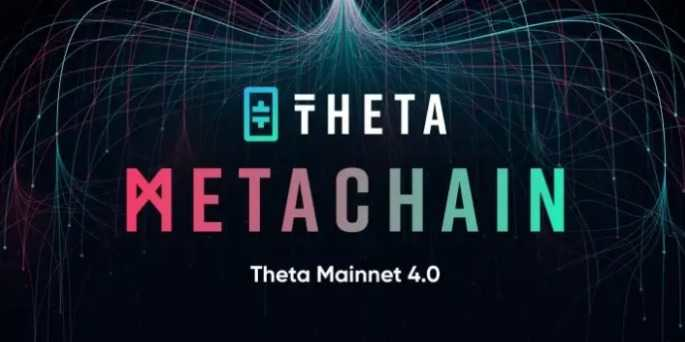Today marks the start of a new era for Theta blockchain — the launch of Theta Metachain, the blockchain architecture purpose-built for Media and Entertainment enterprises entering the Web3 space. With this upgrade Theta blockchain will gain the high transaction throughput, customization, and reliability that is necessary for leading Media and Entertainment enterprises to bring their millions of users onchain.
Theta Metachain is an interconnected network of blockchains, a “chain of chains”. It will allow permissionless horizontal scaling of the Theta blockchain network in order to achieve potentially unlimited transactional throughput and subsecond block finalization time. This enables a customizable, highly scalable blockchain tailored for emerging Web3 businesses in the media and entertainment space.
Media and Entertainment companies face a number of challenges today. The Streaming Wars are leading to increased competition, decreased profits, and declining subscriber numbers. On the other hand users are burned out by too many subscriptions and too high costs. Blockchain monetization models using NFTs or tokens can package and gate content in creative new ways that serve better for the content owner/creator and the consumer, breaking the cycle of bad user experiences. These token economies allow brands to build a one-on-one relationship with their fans and users, free of intermediary vendors and their fees, which allows them to offer better incentives, rewards and value directly to their users. Blockchain also enables secure tracking of video views and rights management, solving two major pain points of media companies — two issues already being addressed by Replay and by Theta’s patented NFT DRM technology, respectively. But these use cases require much higher throughput and flexibility than existing solutions, and Theta Metachain aims to meet that need for Media and Entertainment enterprises in Web3.
Architecturally the Metachain consists of one “main chain” and an unlimited number of “subchains”. Just as “meta-” as a prefix refers to something that transcends or is more comprehensive than the subject, ex. metaphysics describing what exists beyond physics, Theta Metachain refers to an overarching “main chain” above many purpose-specific “subchains”. The “main chain” in this case refers to the existing Theta mainnet. Theta will offer an easy-to-use SDK that developers can quickly use to launch a subchain and plug it into the main chain. Since each subchain can execute transactions independently, this provides a viable path to infinitely scale the processing capacity of the Metachain. The subchain SDK will implement a built-in interchain messaging channel which connects the subchains and the main chain, and thus allows crypto assets like TNT20/721 tokens to flow freely across the chains. The process of creating a subchain is permissionless, meaning that anyone can register and launch a subchain. No approval from Theta Labs is required. You can find the open-source Metachain code on Theta GitHub.

The first subchain has now been deployed on testnet by Replay, the video tracking and payments platform built on Theta. The subchain produces a new block every 2 seconds, which is much faster than the Theta mainchain. Because of this, transaction finalization on the subchain will also be significantly faster. Additionally, Theta Labs has launched a mainnet Developer Playground subchain for developers to begin creating dapps, either standalone or in preparation for launching their own subchains, as many ecosystem projects are planning to do.
Later in the blog you can find the leading Metachain launch partners already planning to release their own subchains, but community Metachain development will be a core focus in 2023 to continue building the Theta Ecosystem! In addition to a new developer education program in the works, a new Metachain-focused Theta Hackathon will begin in Q1 2023.

The Metachain launch features a new Metachain Explorer design which showcases the Mainchain and the Playground subchain:
Metachain Overview Page, from here the users can navigate to explorers of different chains: https://metachain-explorer.thetatoken.org/
Main Chain explorer: https://explorer.thetatoken.org/
Developer Playground explorer: https://tsub360888-explorer.thetatoken.org/
A newly-designed “Metachain navigation bar” has been added to the explorer pages for users to quickly jump between different chains. Users can simply click on the “Go to chain” drop-down menu on the right to see the list of the chains (see the screenshot below). Users can also click on the “Metachains” menu item to navigate to the Metachain overview page.
Subchains can be accessed via Theta Web Wallet, Theta iOS and Android Wallet (v4.0.0 update available now in most regions, with some to come later today as App Store updates), and Metamask. Instructions on how to bridge assets between the Mainchain and subchains can be found here.
For developers, below are the ETH RPC endpoint and related info for the “Developer Playground” Subchain:
Network Name: Theta Playground Subchain
ETH RPC URL: https://tsub360888-eth-rpc.thetatoken.org/rpc
Chain ID: 360888
Currency Symbol: vTFUEL
Block explorer URL: https://tsub360888-explorer.thetatoken.org/
Launch Partners
Metachain was conceived to enable use cases for Media and Entertainment companies that require higher transaction throughput and customization from their blockchains. With leading launch partners preparing to launch their own subchains, Metachain is poised for rapid growth in 2023:
Replay

Replay is the blockchain video tracking & payments platform supercharging video for web3. Replay tracks video consumption in real time, removing monetization friction for content creators and delivering unparalleled transparency into viewership and performance. Built on Theta’s blockchain protocol, Replay enables digital-ready streams that are trackable on the blockchain and available for distribution via a consumption-based model, using the RPLAY TNT-20 token to decentralize and reimagine video streaming, tracking and payments.
Replay also launched Rewarded TV, a blockchain-enabled OTT streaming service that lets viewers earn crypto in real-time for watching, sharing and engaging with their favorite content, without ads or subscriptions. Powered by Theta blockchain, viewers can today sign-up for free and enjoy premium VOD and Live TV content. Users are able to earn RPLAY, a TNT-20 Theta token, for watching, sharing and engaging with their favorite content, as well as purchase NFTs which evolve in real time to unlock exclusive token-gated content.
Symbiote Creatives / Fuse Wars

Symbiote Creatives (SC) is a family of entrepreneurs, creators, builders and experts. The team, led by founder Ivory Jones, has previous experience at AWS, Oracle, Google, SunGard, Ethereum, Unreal, Unity, and other leading companies in the tech and gaming space. Symbiote Creatives offers solutions to gaming developers to integrate their games with full blockchain and Web3 capabilities. By basing their blockchain integrations exclusively on Theta Metachain, they can deliver on their promise of unlocking innovative GameFi earnings solutions.
Much of the buzz around Symbiote Creatives is due to their highly-anticipated game FuseWars. FuseWars is a third person shooter multiplayer experience currently in development, utilizing Epic Online Services to access achievements, matchmaking and lobbies in a peer-2-peer game environment. The game has already generated a huge buzz in the Theta community and beyond, including media coverage from NFT Mag, and thex associated NFTs have the highest demand of any collection in the ThetaDrop Marketplace. Players can choose their Fuse Guardian to battle friends and control the battlefield. A closed beta version is already being tested by key community members, and open beta is expected to launch in late December 2022. Members of the beta test community routinely stream game play on THETA.tv.
Order of the Tigons

Order of the Tigons (OOTT) is a creative venture developed by Verified Labs, a Web3 production studio focused on blockchain tech, digital art, media, entertainment, and the future of the metaverse. Jon Heder (Napoleon Dynamite, Blades of Glory, CYKO KO) is one of five partners in Verified Labs, and is the artist behind the quirky hybridized space cats featured in the Tigons 2D generative NFT collection.
Order of the Tigons will be among the first projects to offer NFT staking when ThetaDrop completes open beta testing of NFT withdrawals from the marketplace. In a first-of-its-kind technology developed by the Web3 innovation firm, Fuel Foundry, Tigons staking will feature “in wallet virtual staking,” which allows NFT holders to earn rewards while keeping NFTs in their own Metamask wallets. Staking rewards will be paid in Kfuel, OOTT’s unique TNT-20 token built on the Theta blockchain, and will also be offered to Theta node operators. Kfuel will be used for governance and perks for upcoming Tigons releases, including participating in story development, tickets to premiers, casting, & with enough Kfuel, even an Executive Producer title on an upcoming Tigons animated series.
Fuse Media

Fuse Media is a Latino-owned, multi-platform entertainment company dedicated to empowering, celebrating, and amplifying young, multicultural voices. With a portfolio of award-winning original content and a growing global footprint, Fuse strives to authentically reflect the world of its young and diverse audience, pioneering a multicultural and creative destination. The Fuse Media family includes Fuse, Fuse+, Fuse Backstage, Fuse Beat, FM (Fuse Music), Fuse Sweat, fuse.tv, and Fuse Content Studio, its in-house production arm, as well as a growing branded content and live events business.
Known for empowering, celebrating, and amplifying young, multicultural voices, Fuse is uniquely positioned to support and promote education and adoption of Web3 tools and opportunities among a key underrepresented demographic in the space. Incorporating Theta-based NFTs and TNT20 tokens, Fuse is aiming to unlock a new level of engagement that strengthens their relationship with their fast-growing audience, with a soon-to-be-announced new platform build from the ground up on Metachain.
Immersive Enterprise Laboratories (IEL)

Immersive Enterprise Laboratories (IEL) is an Animation and Web3 Entertainment studio, now emerging from stealth and on a mission to deliver the next generation of entertainment and experiences. The IEL team is comprised of technology veterans and creators from the entertainment industry who are on a mission to produce the experiences needed to bring Web3 Entertainment to life. Their storytelling abilities, artistic expertise, and proficiency in entertainment technologies enable them to create compelling and engaging experiences.
IEL’s comprehensive technology stack includes real-time live motion capture, advanced motion capture stunt coordination, collaborative workflows, industry-standard 3D modeling tools, real-time rendering, visual effects, and post-production integrations. Combined with our state-of-the-art workflow, these technologies produce the highest quality visualization, style, storytelling, and visual fidelity.
TrooVRS

trooVRS is an immersive media platform for men to engage with practical knowledge and self-care-focused content across virtual editorial environments, experiences, worlds, NFTs, and eCommerce. By using VR, Web3, and blockchain technology, trooVRS aims to reinvigorate and transform the world of men’s editorial and share a new way to experience content in the metaverse. Building on the recent announcement of Fuse Media as the first Metachain partner, trooVRS continues to expand the media and entertainment industry’s adoption of Theta blockchain.
Led by CEO Adrian Whant, a digital media and advertising veteran who has held leadership positions at companies like NBCUniversal, Univision, ABS-CBN, trooVRS virtual worlds are purpose-built, where brands can hold activations such as presentations, branded content, and product demos in relevant environments such as stages, kitchens, gyms, showrooms and more. They will also be able to offer exclusive real and virtual goods and services including NFTs on Theta blockchain. trooVRS is working with leading brands to conceptualize initial activations on the platform.
Metapass

Metapass allows you to create events on Theta and sell NFT tickets so you can token gate your event and also server proof of attendance.
Conclusion
This is just the beginning for Theta Metachain! Stay tuned for upcoming subchain launches and for Theta community developers, subchain dev educational opportunities and hackathons. Join the Theta Ecosystem as we build the next generation of Web3 applications for media and entertainment!




























